Metal moves like life … One step forward, two steps back
I have coast-to-coast friends – builders, mechanics and DIYers – all of whom are quite proficient, some even downright talented, at maintaining and modifying their motorcycles. I get by … I can do oil and filter changes, replace brake pads, bleed brake lines, do minor wiring mods, and even swap out batteries and re-program ECUs.
I’ve also added my fair share of bolt-on aftermarket parts.
But, high school industrial ed classes notwithstanding, designing and building specialty parts for bikes always felt a little out of reach.
So it would seem like providence when a Sheetmetal Shaping Fundamentals class, offered by noted custom builder Keino Sasaki, of Indian Larry, Brooklyn Invitational and Biker Build-off fame, came up on the local moto calendar … a chance to test my mettle, so to speak.
The day-long session, an introduction into a more old-world style of manufacturing, familiarized us with a litany of hand tools … a variety of hammers, mallets, dollies, shears and sand bags, as well as metal shrinking, stretching and planishing equipment. My favorite exercise would quickly become working on the English wheel or ‘rolling hammer’. But more on that later.
So it would seem like providence when a Sheetmetal Shaping Fundamentals class, offered by noted custom builder Keino Sasaki, of Indian Larry, Brooklyn Invitational and Biker Build-off fame, came up on the local moto calendar … a chance to test my mettle, so to speak.
'Us’ included myself, local moto photographer Ryan Handt, and Brooklyn Invitational co-founder and fine arts painter John Copeland.
Handt, who is currently restoring his 1991 Suzuki DR650, has his eye on building a seatpan for the ride, and possibly even a small dirt tracker fairing.
My hope is to eventually be skillful enough to build a Norton Manx-style fairing and brackets for my modified Triumph Thruxton.
But as with anything you have to start with the basics and practice, practice, practice.
Keino’s philosophy is in abundance during the class, a mantra based on learning by doing, improving on your mistakes and plotting your strategy from the beginning, even for simple projects such as the plates and teardrop shape we are focused on.
The same can be said about the hand tools … one could produce products quicker with industrial machine tools, but there’s something to be said for learning the tried-and-true, hand-built methods. As a professional photographer I learned with fully manual film cameras, on the job as a much as in class. Knowing manual techniques is invaluable even in the highly digital world we now live in. Things go wrong, and you sometimes need that knowledge to fall back on. It guarantees success.
In class, one quickly learns that metal shaping is a set of steps forward and backwards, creating bends and curves, and then compensating for the ramifications of each hammer hit. Newton’s Third Law -- ‘For every action there is an equal and opposite reaction’ -- was never more true. Metal moves and reacts to stresses. But it is predictable if you’ve done your homework and built up a lifetime of experience.
The same can be said about the hand tools … one could produce products quicker with industrial machine tools, but there’s something to be said for learning the tried-and-true, hand-built methods. As a professional photographer I learned with fully manual film cameras, on the job as a much as in class. Knowing manual techniques is invaluable even in the highly digital world we now live in. Things go wrong, and you sometimes need that knowledge to fall back on. It guarantees success.
Our first bowl, created from a flat sheet of 16-mil aluminum, concentrated on stretching techniques using mallets to form the metal over a shot bag full of sand. Hit too much on one side and the bowl becomes uneven, more of an open clam shape. But strategically shrinking the edges of the round shape forces any movement of the metal to radiate inwards toward the center, keeping a more even curve from top to bottom. As Keino says … it’s hard to explain, so you need to ‘do’.
I’m actually quite pleased with my first effort, especially after using both the machine planisher and English wheel to smooth out any hammer marks and perfect the curve of the bowl.
Using an English wheel, you pass sheet metal between an anvil wheel and a rolling wheel. This process stretches the material and causes it to become thinner. As the material stretches, it forms a convex surface over the anvil wheel.
The whole process is both tactile and auditory … you can feel the metal as it smooths out. And even the sound of the metal as it rolls through changes during the process. It is a very satisfactory feeling.
For Keino, looking at how metal reflects light is also an indicator of where he need to hammer next to keep the process to a completed form moving forward. I’m definitely not there yet.
Of course my initial confidence is quickly laid to waste, when our second bowl project starts, an exercise in how to use metal shrinking. Stretching is far easier, we’re told.
Keino’s demo on ‘tuck shrinking’ -- making A-shaped tucks from the outside of the circular piece of medal to the center in a radial pattern, and then hammering down each ridge in a concave wooden form to shrink the metal and make a bowl shape – was fairly difficult in practice. In reality, things go quickly sideways for me with the bowl becoming misshapen almost from the outset. Long sessions on the industrial planisher – which hammers 100s of times a minute -- and the English wheel served to fix some problems, under the watchful eye of the instructor. But the finished product was nothing to write home about.
Keino admits he learns every day on the job, and actually even from his students in class. Looking at a pupil’s work go wrong has Keino positing on how he would go about fixing those steps to “bring the metal back.” The same even can be said for his own early work. Keino still has one of the first tanks he ever built as an employee at Indian Larry’s shop, a process done after hours without the benefit of more modern machinery. He points out the irregularities in the shape and adds how he would tackle the build differently now, more than a decade and half later.
Here’s the kicker though. Keino admits he learns every day on the job, and actually even from his students in class. Looking at a pupil’s work go wrong has Keino positing on how he would go about fixing those steps to “bring the metal back.” The same even can be said for his own early work. Keino still has one of the first tanks he ever built as an employee at Indian Larry’s shop, a process done after hours without the benefit of more modern machinery. He points out the irregularities in the shape and adds how he would tackle the build differently now, more than a decade and half later.
The important thing is to always keep learning, Keino says.
Our last project of the day … a teardrop shape, kind of ties the class to the moto world, as this shape is a common piece in constructing the top of a tank: Two inner bowl shapes at the end joined by a curve with the edges curled downwards. The strategy to shrink the metal along the top and bottom curves works allowing me to create bowl shapes at each end … but then things start to warp in the middle and there’s no coming back … for me at least.
Keino’s patience with the project, some strategic hammering and a session on the English wheel, makes my final piece workable again.
Looking at some of the pieces of bodywork in various stages of completion in Keino’s Red Hook shop, strategy, planning and patience would seem to be in large supply.
For me a Stage 2 class, when it comes up, is definitely in the personal calendar. Now it’s time to check out maybe getting my own set of hand tools … a simple set, minus any industrial air compressed tools, will run about two Franklins and a Grant ($250). That said, then my neighbors will have to contend with the sounds of the Industrial Revolution taking over my floor. So we’ll see …
Sheet Metal Shaping Basics at keinocycles.com will resume in the fall. Summer sees the Keino Cycles shop full of bikes being worked on, leaving free space at a premium.

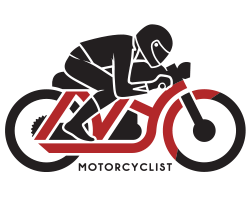

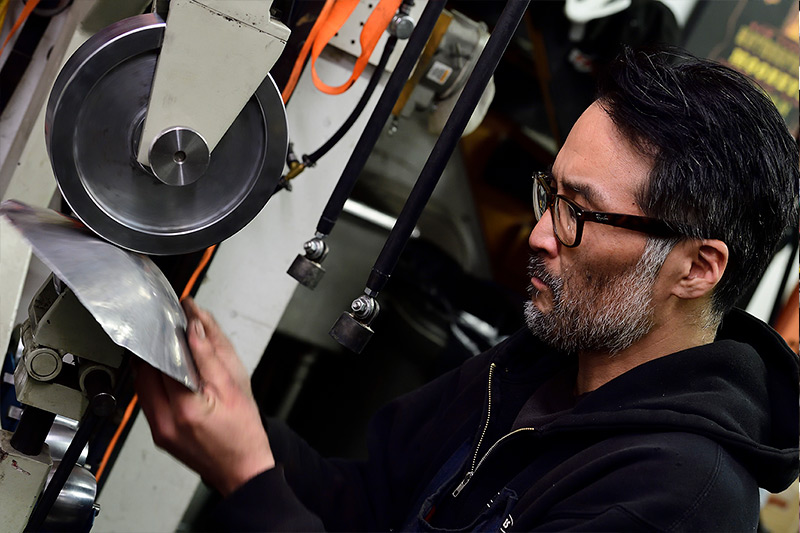
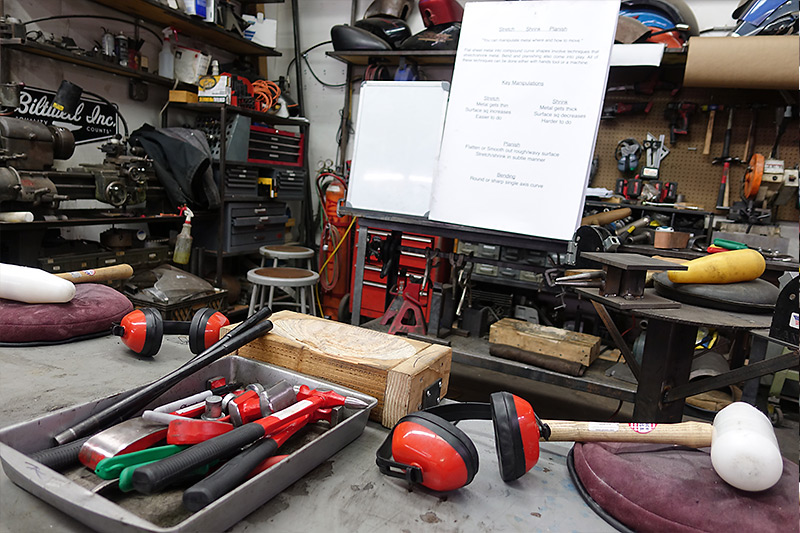
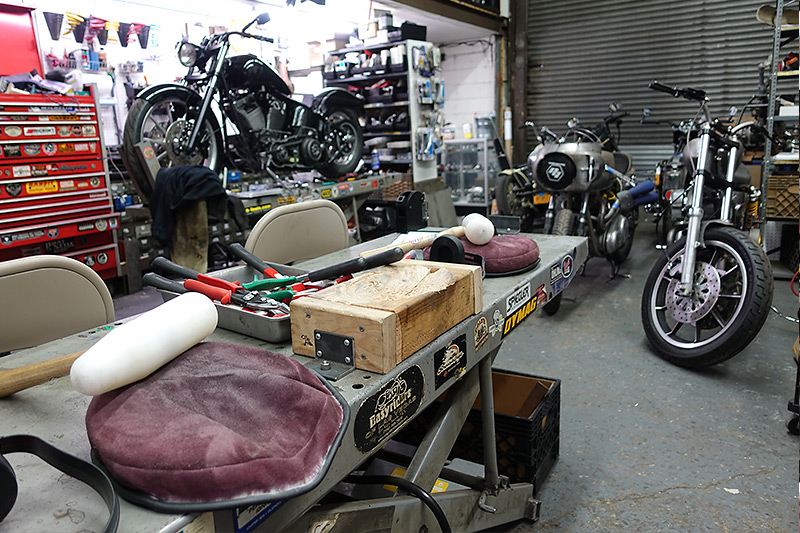
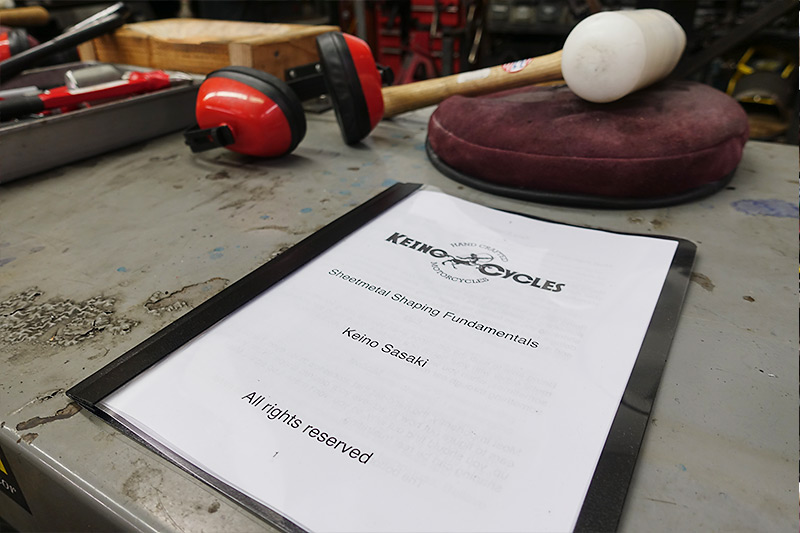


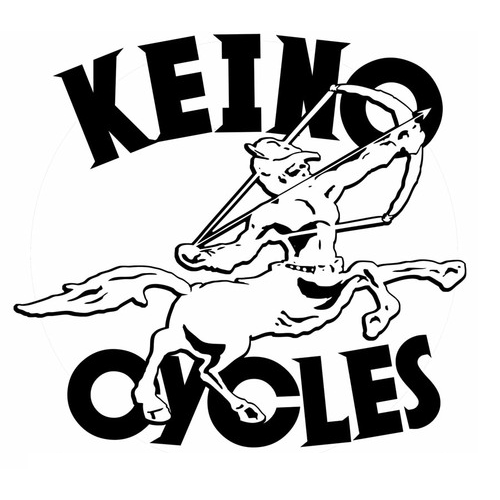
Leave a Comment